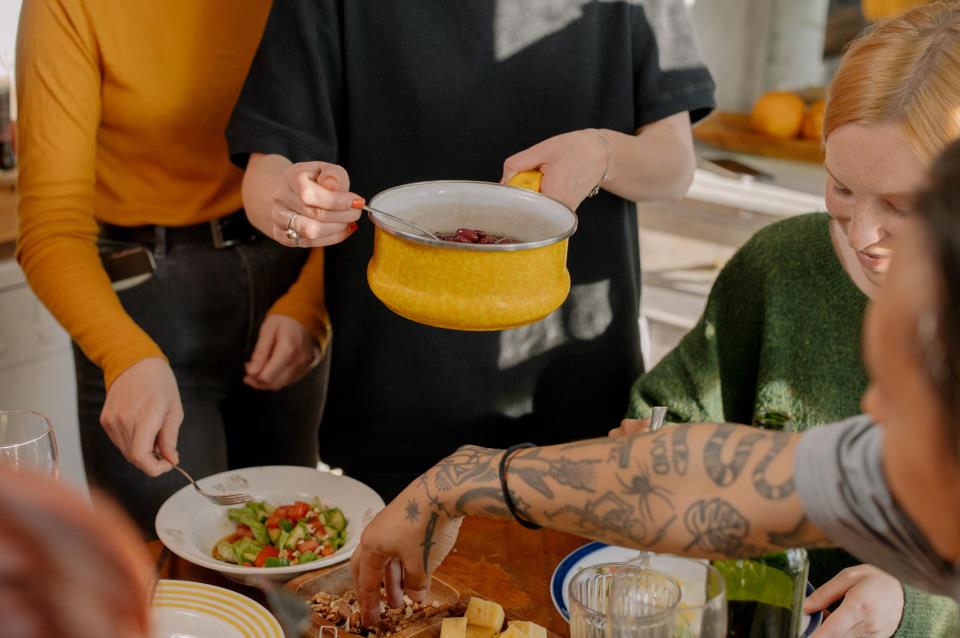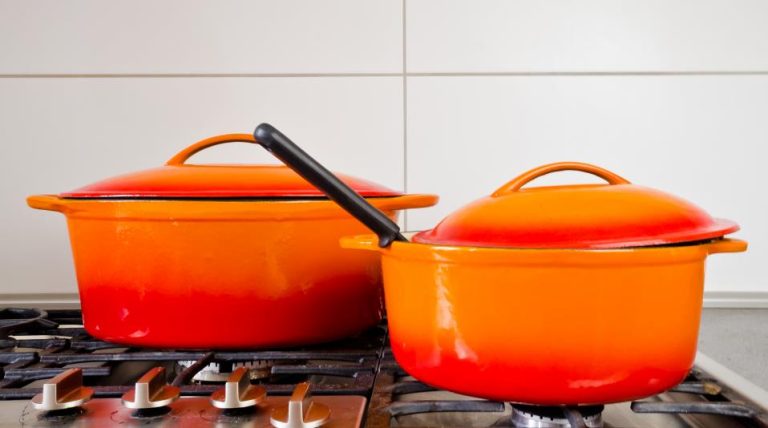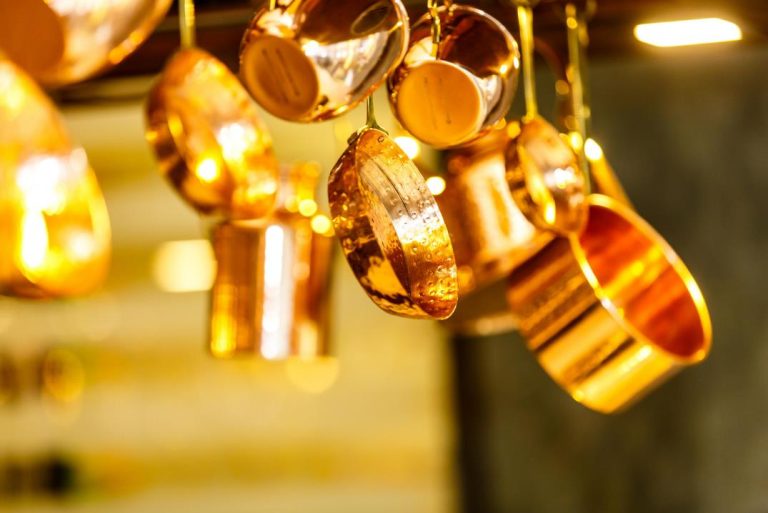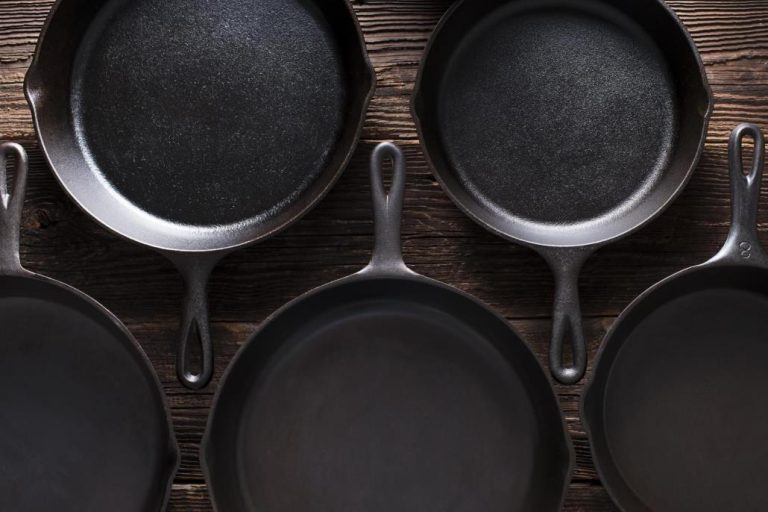According to experts, the enameled cast iron cookware industry is forecasted to reach $2.2 billion by 2028, showing a growth of 5.9% CAGR.
Investing in high-quality enameled cast iron cookware can be a smart decision for businesses in the cookware industry. It is durable, long-lasting, and can withstand heavy use.
In this guide, we will discuss the pros and cons of enameled cast iron and compare it with other cookware materials. So, let’s get going!
What is enameled cast iron?
Enameled cast iron, as the name suggests, is cookware made of cast iron. It has an enamel coating made of powdered glass fused to the iron base using a high-heat process. It creates a smooth, non-porous surface over the iron, which is resistant to rusting and prevents the food from sticking to the surface.
Over the years, this cookware has become popular among professional chefs and home cooks. This is due to its durability, versatility, and even heat distribution. Also, the ease of cleaning makes it everyone’s favorite.
Enameled cast iron cookware: weighing the pros and cons
If you’re in the market for high-quality cookware, enameled cast iron is worth considering. But like any cookware, they come with pros and cons. So, it’s important to weigh them when deciding if selling them is the right choice for your business.
Pros of enameled cast iron cookware
Versatility
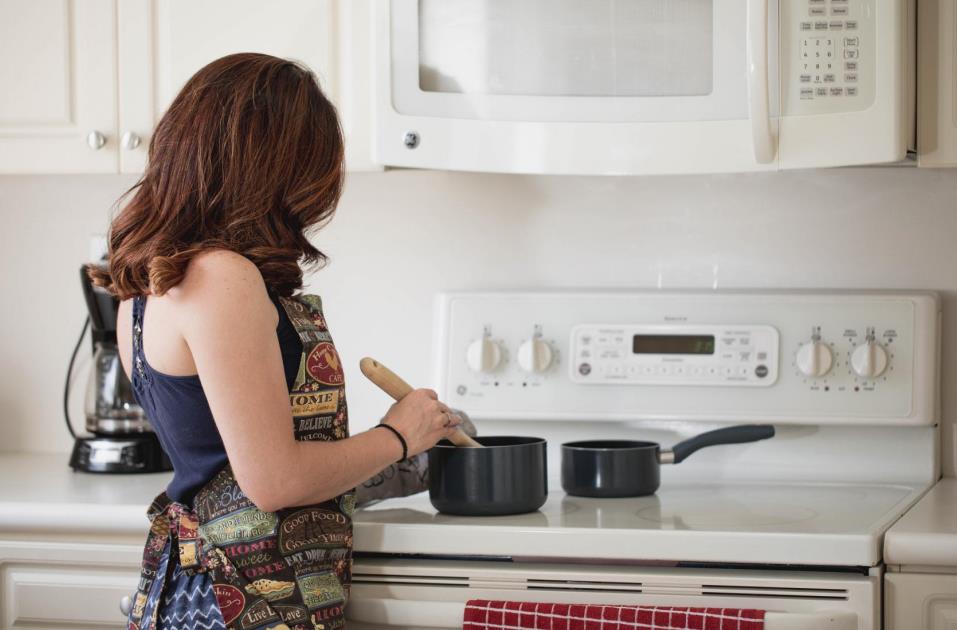
Enameled cast iron pans are more versatile than other cookware materials like stainless steel. They can be used on various stovetops like gas, electric and induction. This allows experimentation with different foods and cooking methods, making the cooking experience exciting.
Moreover, they are also oven-safe and can be used to bake or roast multiple dishes. This makes it an excellent choice for one-pot meals that can go from stovetop to oven, as well as for dishes that require browning on the stovetop and then finishing in the oven.
Whether it is a quick snack or preparing meals for dinner parties, enameled cast iron cookware’s versatility makes it all possible. And this is why its demand is increasing with time, creating a good business opportunity to take advantage of.
Design
Enameled cast iron cookware comes in a range of design options. The enamel coating can come in various colors, making it easy to coordinate with a kitchen’s color theme. Additionally, the coating can be glossy or matte, providing the opportunity for experimenting with different aesthetic effects.
Also, you can find them in many sizes with varying base thicknesses. The sea of options in the enameled cast iron cookware provides for a considerable market to capitalize on.
For example, the enameled cast iron dutch oven comes with looped handles. This gives you more space to hold onto the pot without burning yourself.
Heat resistance and retention
Enamel cast iron cookware is made of high-quality materials, which is why it can withstand temperatures of up to 500-600 degrees Fahrenheit in the oven. This makes it a great choice for recipes that require high-heating cooking, such as roasting chicken or baking cakes.
Enameled cast iron skillets and pans are known for their heat retention ability. The cookware consists of a thick iron base, a great conductor of heat that allows you to keep food warm for a long time.

Although it may take more time for enameled cast iron pans and pots to heat, they can keep the food warm once they are considerably hot.
No leaching
Enameled cast iron is made with non-toxic materials. The enamel coating prevents the acid from reacting with the cast iron. So chefs don’t need to worry about the food tasting metallic or becoming discolored.
Low maintenance
Enameled cast iron cookware does not require regular seasoning to maintain its non-stick surface. The enamel coating prevents food from sticking to the cookware’s surface, making it rust-free and easier to clean.
It is also dishwasher safe, although it is recommended to hand wash it to ensure that the enamel coating is not damaged.
Durable
Enameled cast iron is known for its durability and longevity. The cast iron core is naturally tough and resilient, and the enamel coating protects against rust, chipping, and scratching. This makes it less likely to break or wear out, even with regular use.
Additionally, enameled cast iron cookware can be passed down from generation to generation. This makes it an excellent investment for consumers looking for something long-lasting.
Buy Wholesale Cookware and Start Scaling up with Us Today
Contact us and connect with a sales rep to get a free quote.
Cons of enameled cast iron cookware
Sensitive to thermal shock
Enameled cast iron cookware is sensitive to sudden temperature changes, also known as thermal shock. This means that exposing it to extreme temperature changes can cause the enamel coating to crack or chip.
For example, if you take a hot enameled cast iron pan and put it in cold water, you might hear a loud crack and see a chip on the surface of your pan.
To prevent this from happening, it’s important to treat your enameled cast iron cookware with care. Always allow it to cool down before washing or storing it. Also avoid using metal utensils on the enamel surface, which can scratch or chip the enamel.
Not completely non-stick

Unlike non-stick pans coated with a special non-stick material, the enameled cast iron piece only has a smooth enamel coating. It creates a smooth surface that is labor-saving to cook on and clean.
While the coating on enameled pieces does help prevent food from sticking, it is not as effective as a non-stick coating. It means that some foods, such as eggs or delicate fish, may stick to the pan’s surface if not cooked properly.
Rusts over time
Although enameled cast iron cookware is known for its durability, it may become damaged with time. When that happens, the underlying cast iron can be exposed to moisture, leading to rust forming.
Rust can not only be an eyesore but can also affect the performance of your cookware. It is advised to refrain from using harsh cleaning agents or rough abrasives that can damage the enamel coating and cause rust.
Also, avoid leaving acidic or salty foods in the cookware for an extended period, as this can lead to corrosion.
Expensive
Enameled pieces can be more expensive than other types of cookware, which can be a downside for some consumers. The cost of enameled cast iron cookware is high due to the materials’ quality and the manufacturing process involved in creating the enamel coating.
Heats slowly
Compared to other types of cookware, enameled cast iron is slow to heat up. This is because cast iron is a dense material. When using this type of cookware, it is recommended to preheat it for a few minutes before adding ingredients, as it accelerates the heating process.
Hot handles
The handles of enameled cast iron can become hot during use which increases the risk of burns. To prevent the handles from getting too hot, use a potholder or oven mitt. It’s also recommended to go for manufacturers who offer enameled cast iron cookware with silicone or stainless steel handles.
Enameled cast iron vs. other cookware materials
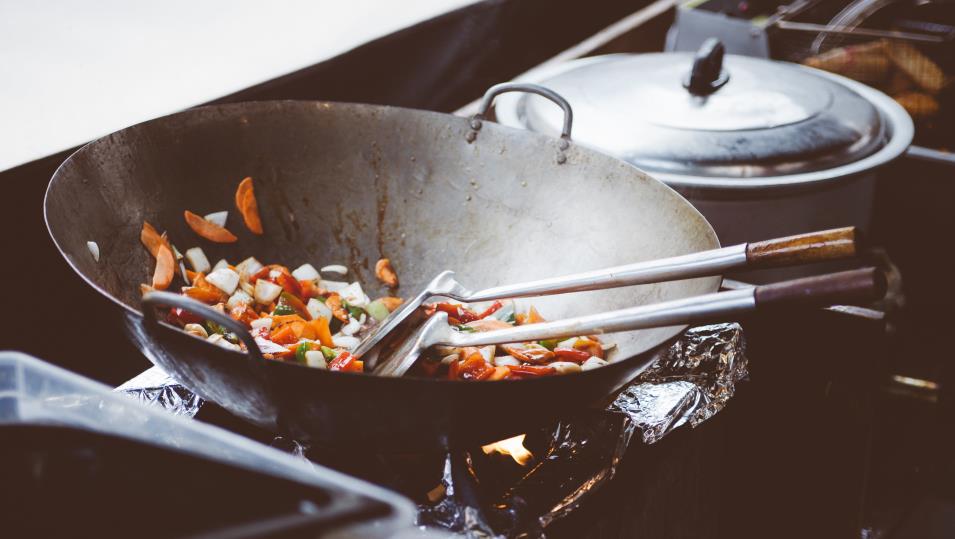
Does the increase in the market size and demand make enamel cast iron cookware one of the best out there? Let’s draw comparisons to find out.
Enameled cast iron vs. seasoned cast iron cookware
Both cookware materials can be used for cooking various meals, are durable, and allow even heat distribution. Yet they are different in other ways, such as:
- Maintenance: Enameled cast iron pans and pots can be washed with soap and water, with no seasoning required. On the other hand, traditional cast iron must be seasoned regularly to prevent rust and maintain its non-stick surface.
- Durability: Seasoned cast iron is highly durable and can last for years with proper maintenance. But the enamel coating on enamel cast iron cookware can chip or crack over time, affecting its non-reactive properties.
- Non-reactive surface: Enameled cast iron cookware has a non-reactive surface. Which means it won’t react with acidic foods like tomatoes or wine. On the other hand, traditional cast iron cookware can react with acidic ingredients, affecting the taste and color of the food.
- Cost: Enameled cast iron is generally more expensive than traditional cast iron.
Enameled cast iron vs. stainless steel cookware
Enameled cast iron and stainless-steel cookware are both popular choices. Here are some key differences between the two:
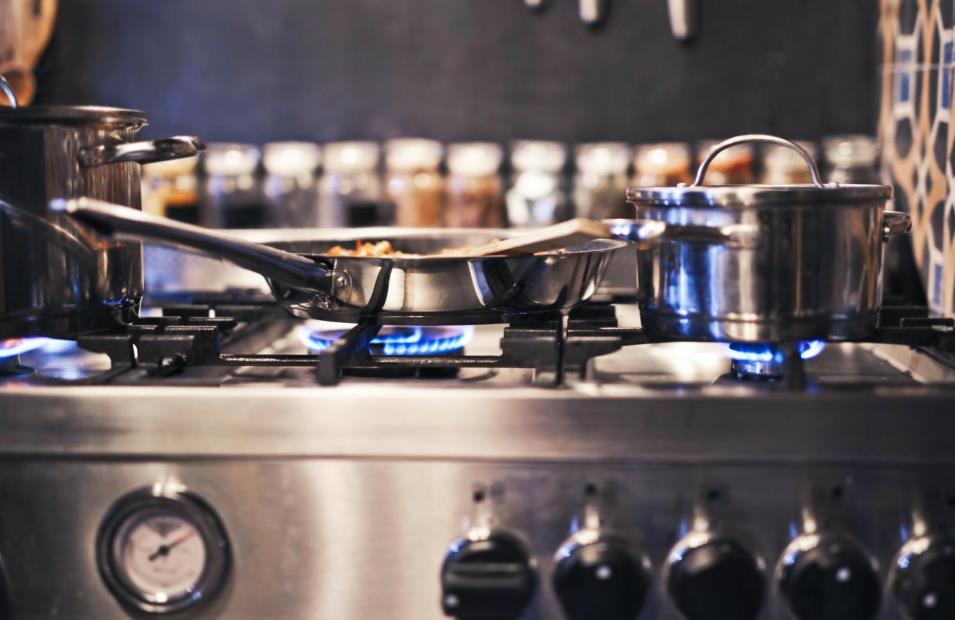
- Heat Retention: Enameled cast iron is excellent at retaining heat, which makes it great for slow cooking, braising, and stewing. Stainless steel, on the other hand, heats up and cools down quickly. It makes it better for cooking things that require precise temperature control, such as sautéing or searing.
- Non-reactive surface: Stainless steel cookware can react with acidic foods, affecting the food’s taste and color. Enameled cookware has a non-reactive surface, so it doesn’t react with acidic foods like tomatoes or wine.
- Maintenance: To prevent rust, pans and pots with enamel coating should be hand-washed and dried immediately after use. At the same time, stainless steel cookware is dishwasher-safe and doesn’t require much maintenance.
- Cost: Enamel pieces are much more expensive than stainless pieces. This is due to the quality of the material and the effort that goes into making them.
Buy Wholesale Cookware and Start Scaling up with Us Today
Contact us and connect with a sales rep to get a free quote.
Should you sell enameled cast iron cookware?
There are several reasons why selling enameled cast iron cookware can be profitable for businesses.
First, enameled cast iron cookware is used in both commercial and domestic kitchens; this expands the client pool and allows businesses to reach a larger audience to generate more sales.
Second, the global enameled cast iron cookware market is expected to grow at a compound annual rate of 3.9% from 2021 to 2029. This makes it a lucrative business opportunity to take advantage of.
Third, enameled cast iron cookware’s durability and high-quality materials can result in fewer after-sale issues for businesses. Compared to lower-quality cookware, enameled cast iron cookware is less likely to break, resulting in fewer returns and exchanges.
Fourth and finally, providing high-quality enameled cast iron cookware that meets customer expectations can lead to positive reviews, word-of-mouth referrals, and a good reputation in the market.
However, there’s always a flip side of the coin. One disadvantage of selling enameled cast iron cookware is that it can be quite heavy, making it more expensive to ship and less attractive to consumers who prefer lighter cookware.
Manufacturing enameled cast iron cookware can also be more costly than other types of cookware. As a result, businesses may need to charge more, which could limit the target audience to those willing to pay the extra price.
Final word
Enameled cast iron has its fair share of pros and cons and businesses should closely consider them before making a final decision. That being said, selling enameled cast iron cookware can allow businesses to expand their product catalog and attract customers who value quality, longevity, and style in their kitchenware.
LeeKnives is a trusted knife manufacturer with a vast range of wholesale product options. Whether you need OEM services or private label solutions, we’ve got you covered. Get in touch with us today to request a quote and take advantage of our competitive prices and exceptional service.
